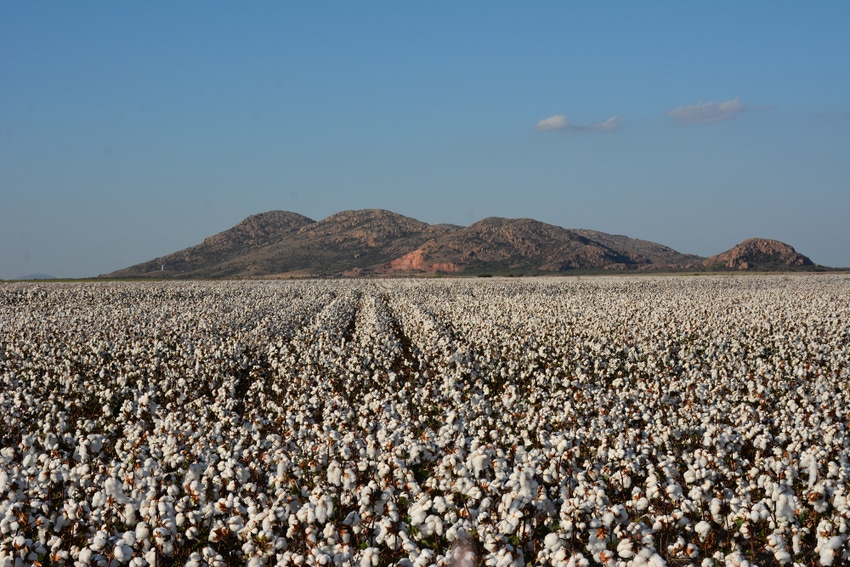
This is still not an official crop report. NASS has still not been in touch with me. I have conducted no official surveys of randomly selected farmers across West Texas or Southwest Oklahoma to gauge how well the cotton looks as harvest gets under way.
But, based on traveling up and down a few farm-to-market roads, and talking to farmers, Extension folk, ag industry observers, and a ginner or two, the prospects look pretty good.
A late September trek into the Texas High Plains showed irrigated cotton doing well as harvest was just getting under way. Dryland cotton needed some rain in July and August, so yields will be off a bit, but some farmers are still looking for a half-bale to three-fourths of a bale per acre.
Dryland also posed some harvest aid problems; late rains initiated regrowth that complicated defoliation.
Weeds have been an issue, and some producers have maintained or gone back to residual herbicides to limit weed trouble. They followed up with residuals applied with their over-the-top materials.
Related
An unofficial, off-the-cuff crop report
Steel also had a role in weed control, especially where farmers suspect resistant pigweed infestations. As one farmer told me, pigweed is not resistant to a cultivator or a hoe.
West Texas cotton farmers and industry officials talked a bit about nematodes. In some areas, the minuscule pests are becoming a primary challenge, especially since the main nematicide producers have used for years is no longer available. They are looking at rotation and tolerant varieties to limit damage.
OKLAHOMA
More recently, I got an even closer look at cotton near Altus, Okla. Justin Abernathy, who farms with his dad, Clint, and brother Jarod, invited me to ride along on a round-bale picker in an irrigated field just out of town. The monitor was jumping from 1,900 lbs. to better than 2,000 lbs. as we moved across a field of near solid white. Clint said they had not officially made four-bale cotton, but were getting close on some fields.
We checked out a dryland field that promised two-bale cotton, or close to it. “It’s the best dryland crop I’ve ever made,” Clint said. Several other farmers said the same, as did Oklahoma State University Extension State Cotton Leader Randy Boman.
He said some farmers, including the Abernathys, have had bacterial blight infestations that cut yield. Conditions mid- to late summer were ideal for development of the pathogen. Damage varied from field to field, with some significant yield losses.
Overall, Southwest Oklahoma cotton looks to be one of the best crops in years. Kenneth Helton, assistant manager for Cotton Grower’s Cooperative at Altus, expects a record year, somewhere north of 120,000 bales, thanks to good yields and increased acreage. “We’re running 24 hours a day,” he said.
Farmers would like to see cotton prices bump up to 80 cents a pound before harvest, but are thankful that the market has moved beyond the low 60-cent range.
It’s been a good few weeks for an up-close look at Southwest cotton. Weather has been fair, mostly; harvest is under way — and for farmers, it’s almost payday.
And NASS, if you need an eyewitness report, I’m at your service.
About the Author(s)
You May Also Like






